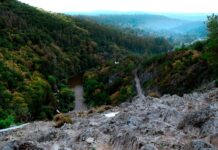Foraging for wild edible plants is an ancient practice that has been a part of human culture for centuries. Wild edible plants are often packed with essential nutrients and are free of chemicals and pesticides, making them a healthy and sustainable food source. While foraging for food in the wild might seem daunting, it can be a fun and rewarding experience with a little bit of knowledge and caution. In this article, we’ll explore the top 10 wild edible plants and some tips for safely foraging for food in the wild.
- Dandelion: Dandelion leaves are packed with vitamin C and iron and can be eaten raw in a salad or cooked as a side dish. The roots of the dandelion can also be roasted and brewed as a coffee substitute.
- Wild berries: Blackberries, raspberries, and blueberries are all commonly found in the wild and are rich in antioxidants and vitamins. These berries can be eaten raw or used in jams, pies, and smoothies.
- Wild asparagus: Wild asparagus is a great source of fiber, vitamin A, and vitamin C. It can be eaten raw or cooked and is commonly found in meadows and along forest edges.
- Nettles: Nettles are a good source of iron and can be cooked as a vegetable or brewed into tea. They are commonly found in wet areas and along stream banks.
- Elderberry: Elderberry is a popular plant for making jam, jelly, and wine. It is rich in vitamin C and has been used for centuries to treat colds and flu.
- Wild garlic: Wild garlic can be found in woodlands and is a great source of vitamin C and iron. It can be eaten raw in a salad or cooked as a flavoring for soups and stews.
- Purslane: Purslane is a succulent plant that is rich in omega-3 fatty acids and can be eaten raw in salads or cooked as a vegetable.
- Chickweed: Chickweed is a mild-tasting green that can be eaten raw in salads or cooked as a vegetable. It is high in vitamin C and iron and is commonly found in gardens and other disturbed areas.
- Wild mushrooms: Some wild mushrooms are edible and can be a great source of protein and vitamins. However, it’s important to be cautious when foraging for mushrooms, as some can be toxic or deadly if ingested.
- Cattails: Cattails are a versatile plant that can be found in wetlands and along riverbanks. The root of the cattail can be peeled and cooked like a potato, while the shoots and stems can be cooked like asparagus.
When foraging for wild edible plants, it’s important to be cautious and always be sure of the plant’s identity before consuming it. Some plants can be toxic or deadly if ingested, so it’s important to do your research and consult a field guide or expert for guidance. Additionally, it’s important to avoid foraging in areas that may be contaminated with pollutants or chemicals, such as near highways or industrial areas.
Foraging for wild edible plants can be a fun and rewarding experience, but it’s important to do so with caution and respect for the environment. By following these tips and guidelines, you can safely explore the world of wild edible plants and discover a whole new world of sustainable and healthy food sources.
Photo by Landon Parenteau on Unsplash
Views: 52






